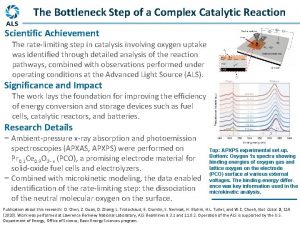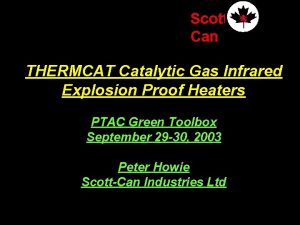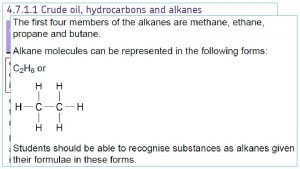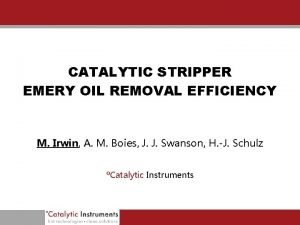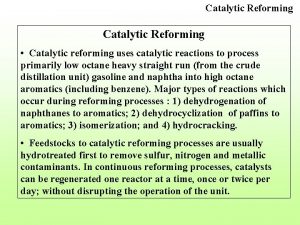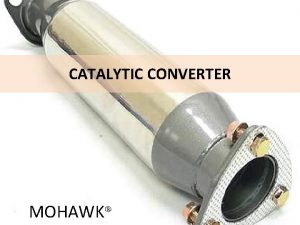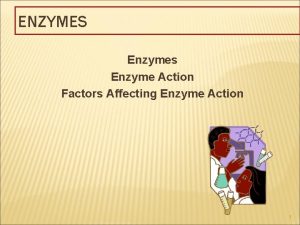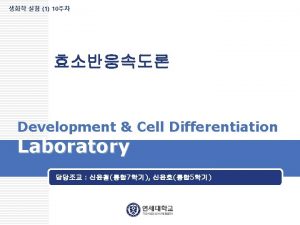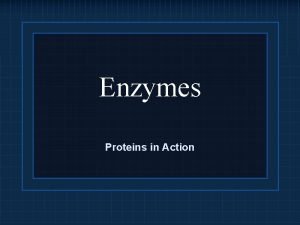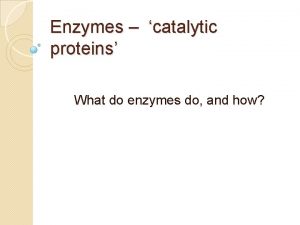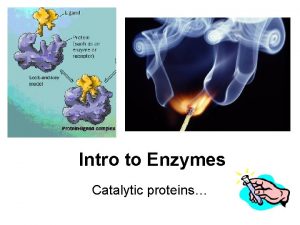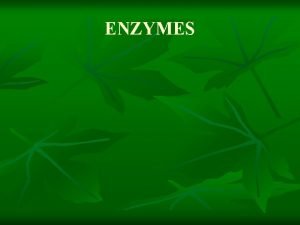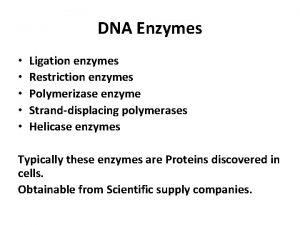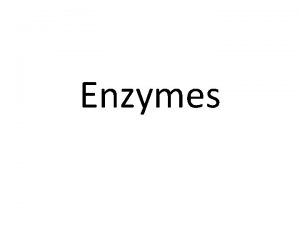Enzyme Action Enzymes proteins with catalytic function possess













- Slides: 13

Enzyme Action Enzymes … proteins with catalytic function … possess 1 O, 2 O, 3 O and 4 O structure … perform a variety of reactions e. g. , hydrolysis, hydroxylation, oxidation, reduction, transfer of groups … … increase the rate of reaction (up to 1017 -fold) MEDC 527 Fall 2008 1

Enzyme Action Three dimensional structure of an enzyme MEDC 527 Fall 2008 2

Enzyme Action Catalytic Triad Chymotrypsin Catalytic Triad Acetylcholine Esterase MEDC 527 Fall 2008 3

Chemical Mechanism of Enzyme Action MEDC 527 Fall 2008 4

Michaelis – Menten Kinetics and Enzyme Inhibition Michaelis-Menten Equation in the presence of a competitive inhibitor What happens at low [S] in the absence of I? What happens at high [S] in the absence of I? What happens at low [S] in the presence of I? What happens at high [S] in the presence of I? MEDC 527 Fall 2008 5

Reaction Mechanisms Theory of Reaction Rates A + B C + D MEDC 527 Fall 2008 6

Reaction Mechanisms Theory of Reaction Rates H 2 C=CH 2 + HCl H 3 C-CH 2 Cl Cl H H 2 C CH 2 H 3 C Cl. CH 2+ Energy (TS)# Transition State EA Reactants DGO Products Reaction Co-ordinate MEDC 527 Fall 2008 7

Reaction Mechanisms Collision Theory • • • Arrhenius Equation … Rate = P×Z×e(–Ea/RT) [Conc. Of Reactants] (Z) Temperature (T) Activation Energy (EA) Probability Factor (P) Collision 1 Collision 3 MEDC 527 Fall 2008 Collision 2 Collision 4 8

Reaction Mechanisms Theory of Reaction Rates • Arrhenius Equation Rate = P×Z×e(–Ea/RT) p. H 5, half–life = 300 yrs p. H 5, half–life = 25 days H p. H 5, half–life = 25 minutes MEDC 527 Fall 2008 9

Reaction Mechanisms Application of Reaction Rate Theory Rank the following molecules according to their ability to hydrolyze faster in water at p. H 6. 0. Use 1 for fastest and 3 for slowest rate of hydrolysis. MEDC 527 Fall 2008 10

Reaction Mechanisms Application of Reaction Rate Theory Rank the following molecules containing ester/amide group according to their ability to hydrolyze in water at p. H 8. 0. Use 1 for fastest rate and 3 for slowest rate of hydrolysis. MEDC 527 Fall 2008 11

Reaction Mechanisms Theory of Reaction Rates (A…B)# • Enzymes! … powerful catalysts (A. . B)# Energy 85 yrs _ 0. 01 s Transition State Activated Complex Transition State in the presence of an enzyme A+B _ C+D Reaction Co-ordinate Another example, catalase: 2 H 2 O 2 2 H 2 O + O 2 EA ~ 18 kcal/mol in absence; ~2 kcal/mol in presence; rate increase of ~1011 -fold MEDC 527 Fall 2008 12

Reaction Mechanisms Reaction Rates Consider reactions A) and B). Circle the reaction that has a longer half-life? MEDC 527 Fall 2008 13
 Ace-2 expression
Ace-2 expression All enzymes are globular proteins
All enzymes are globular proteins Not all enzymes are proteins
Not all enzymes are proteins Membrane synthesis
Membrane synthesis Structural proteins function
Structural proteins function![Beta] Beta]](data:image/svg+xml,%3Csvg%20xmlns=%22http://www.w3.org/2000/svg%22%20viewBox=%220%200%20200%20200%22%3E%3C/svg%3E) Beta]
Beta] Catalytic reformer bottleneck
Catalytic reformer bottleneck Catalytic air purifier
Catalytic air purifier Scott can industries
Scott can industries Ethanol covalent
Ethanol covalent Catalytic converter reaction mechanism
Catalytic converter reaction mechanism Emery oil prices
Emery oil prices Catalytic reforming of hexane
Catalytic reforming of hexane Catalytic converter ingredients
Catalytic converter ingredients
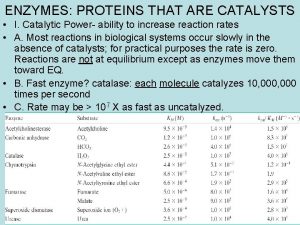
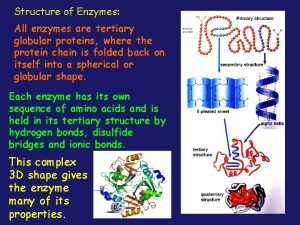
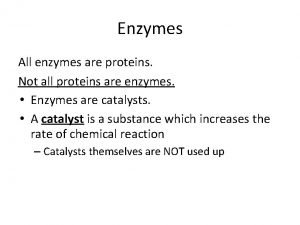
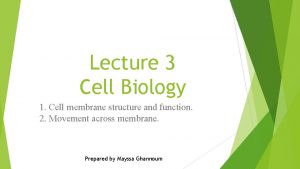
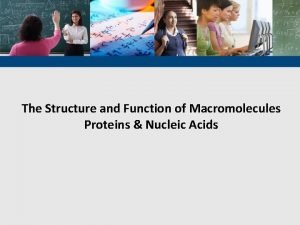
![Beta] Beta]](https://slidetodoc.com/wp-content/uploads/2020/09/657080_a4409c7c0464b8d1f634c79c1028ad3a-300x225.jpg)
